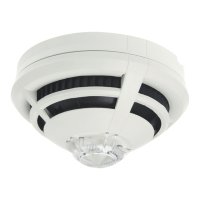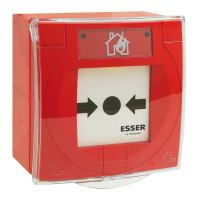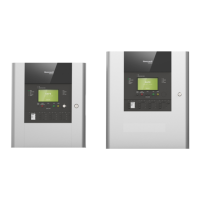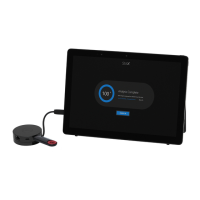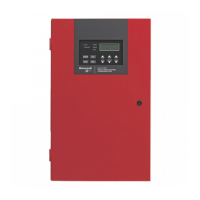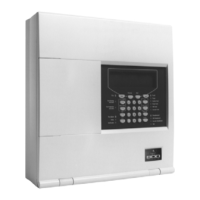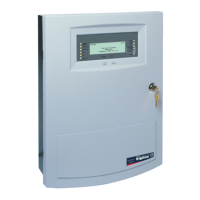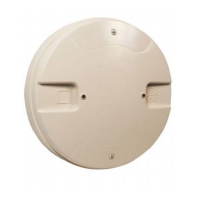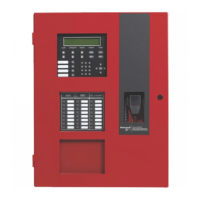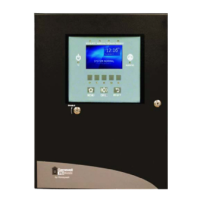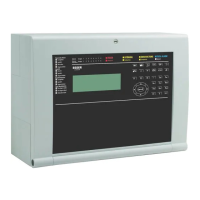
Do you have a question about the Honeywell ESSER Fire Alarm Control Panel Compact and is the answer not in the manual?
| Type | Fire Alarm Control Panel |
|---|---|
| Series | ESSER Compact |
| Number of Detectors per Loop | 127 |
| Power Supply | 24 V DC |
| Frequency | 50/60 Hz |
| Enclosure Protection | IP30 |
| Number of Loop Devices | Up to 127 |
| EN54 parts | EN54-2, EN54-4 |
| Input Voltage | 230V AC |
| Humidity | Up to 95% RH, non-condensing |
| Communication Interface | RS-485 |
| Certifications | EN54 |
Defines 'qualified personnel' for safety information, including planning, maintenance, and installation staff.
Explains symbols indicating hazards for injury, fatality, property damage, and procedural instructions.
List of related documents for operating instructions, installation, and technical information.
Details on installing and managing USB drivers required for the programming software and PC interface.
Explains the FACP display elements, symbols, and access levels for system configuration.
Explains the FACP's memory concept, including current data, backup, and configuration templates.
Describes how to create and use custom configuration templates tailored to specific building requirements.
Details on accessing different operational levels, including installer level, and managing access codes.
Information on the default installer access code and the importance of changing it after commissioning.
Overview of core functions within the service menu, including event logs, battery, earth fault, configuration, and access levels.
Describes how to display the event log, its chronological order, and message serial numbers.
Provides information on battery status, voltage, resistance, and charging current, including limit values.
Details on earth fault measurement, thresholds, and how to suppress earth fault information temporarily.
Explains how to save, edit, and load configurations, including backup and template options.
Describes the process for exiting configuration menus, including saving or cancelling changes.
Navigating the zone menu to view configured zones and program individual zone settings.
Details on overview compact, overview, and single/multiple assignment options for zones.
Instructions for selecting zones and editing their properties via the panel keyboard, noting limitations.
Describes how to select zone types (Fire, Alarm, Fault, etc.) and their corresponding activation functions.
Information on setting up unused zones and retaining programmed settings for future use.
Illustrates the menu screens for configuring control input types, including coming/going events and functions.
Configuration of mainboard interfaces, inputs, and outputs using the EDP protocol for RS485.
Details on configuring RS485 for WINMAG/FIP/FOP and RS232 for future use.
Instructions for configuring and replacing esserbus subscribers using the service and programming software tools.
Describes two methods for exchanging detectors: automatic detection or manual selection and serial number entry.
Steps for exchanging a detector at the installation location, involving loop error reporting.
Procedures at the FACP for identifying new detectors, assigning serial numbers, and confirming data.
Steps for detector exchange at the FACP using serial number entry, including type verification.
Initiating detector data assignment at the installation location after FACP configuration.
Steps for single assignment of ATU outputs to control zones, including function type selection.
Details on selecting ATU function types and configuring related parameters like pulse duration and latching.
Details on programming trigger events, event types, panel states, and activation zones for control zones.
Explains assigning hardware outputs (OUT_1 to OUT_4) to control zones and the plausibility check.
Steps for configuring control zones and assignments for FPE/FIE outputs, including selection of control zones and function types.
Detailed steps for programming trigger events, event types, panel states, and control zone assignments.
Details on setting trigger prevention based on cover contact status or other conditions.
Explains how to set the pulse duration for control zones, affecting activation time.
Lists trigger events and their corresponding panel states for system programming.
Configuration options for display functions, including panel description, codes, and fault evaluation.
Explains the acoustic mute function, its programming, and effect on alarm devices.
Procedure for entering a building-specific description for the FACP displayed on the panel and in software.
Details on entering and editing access codes for different operational levels, including installer and customer data.
Configuration of daylight saving time start and end points for automatic time switching.
Instructions for entering the specific dates and times for the commencement and conclusion of summer time.
Configuring delayed activation of ATU and alarm devices, including verification time and day/night mode.
Displays configured switching times and types, and provides access to special day programming.
Instructions for defining, editing, or deleting special days with unique switching times.
Process of verifying the configuration for errors or warnings before saving the data record.
Steps to enter and exit revision mode for performing service work without triggering external alerts.
Procedure to configure control zones (outputs) as 'unused', deactivating their activation.
Steps to deactivate FIP/FOP devices connected to the RS485 interface by setting it to 'unused'.
Procedure for diagnosing battery faults, checking voltage, and updating measurements.
Steps to diagnose zone faults, correct the issue, and reset the zone status.
Procedure for diagnosing and correcting ATU faults, including control zone status checks.
Overview of factory settings and available templates for fire alarm control panel configuration.
Details on templates specifically designed for commissioning fire alarm systems at construction sites.
